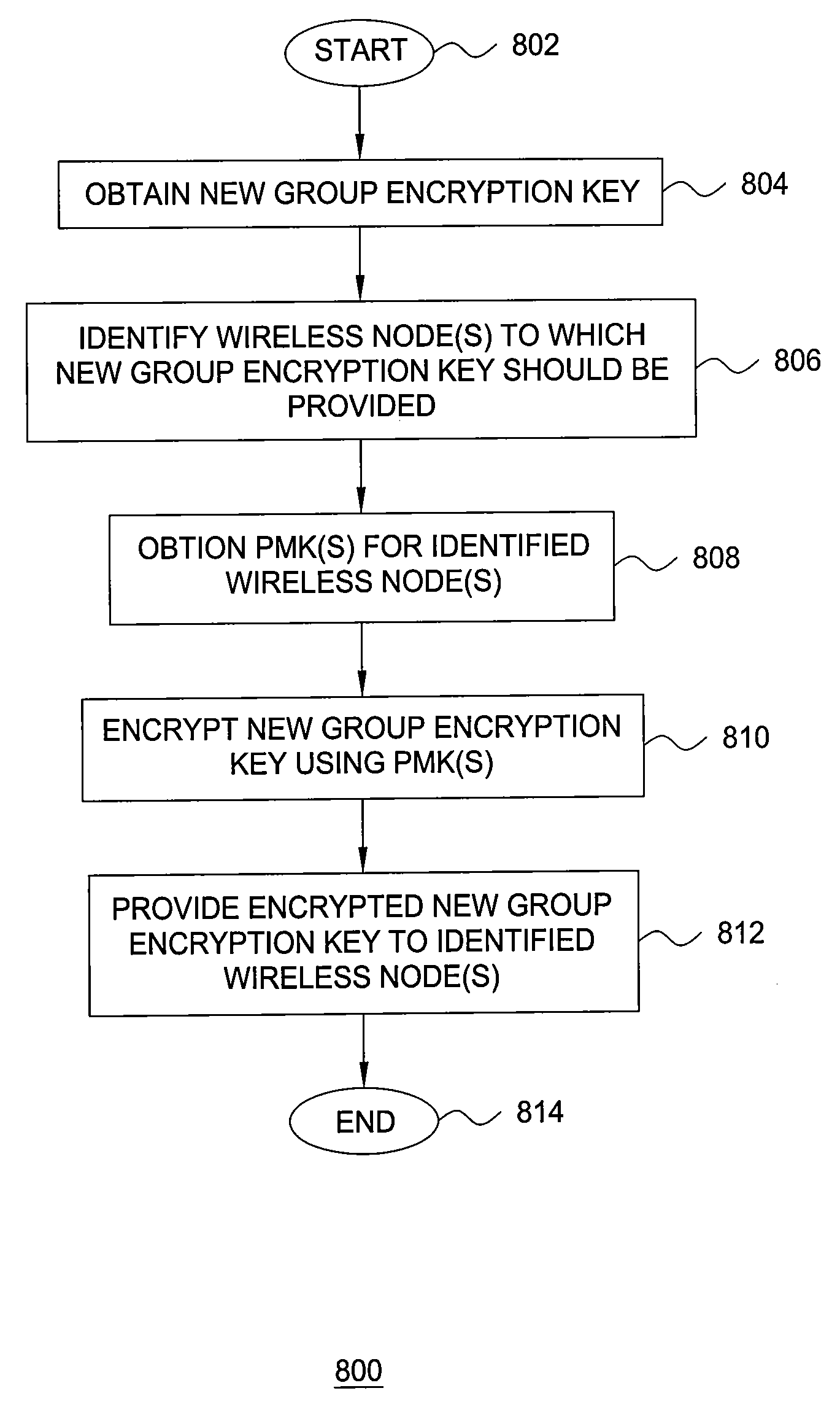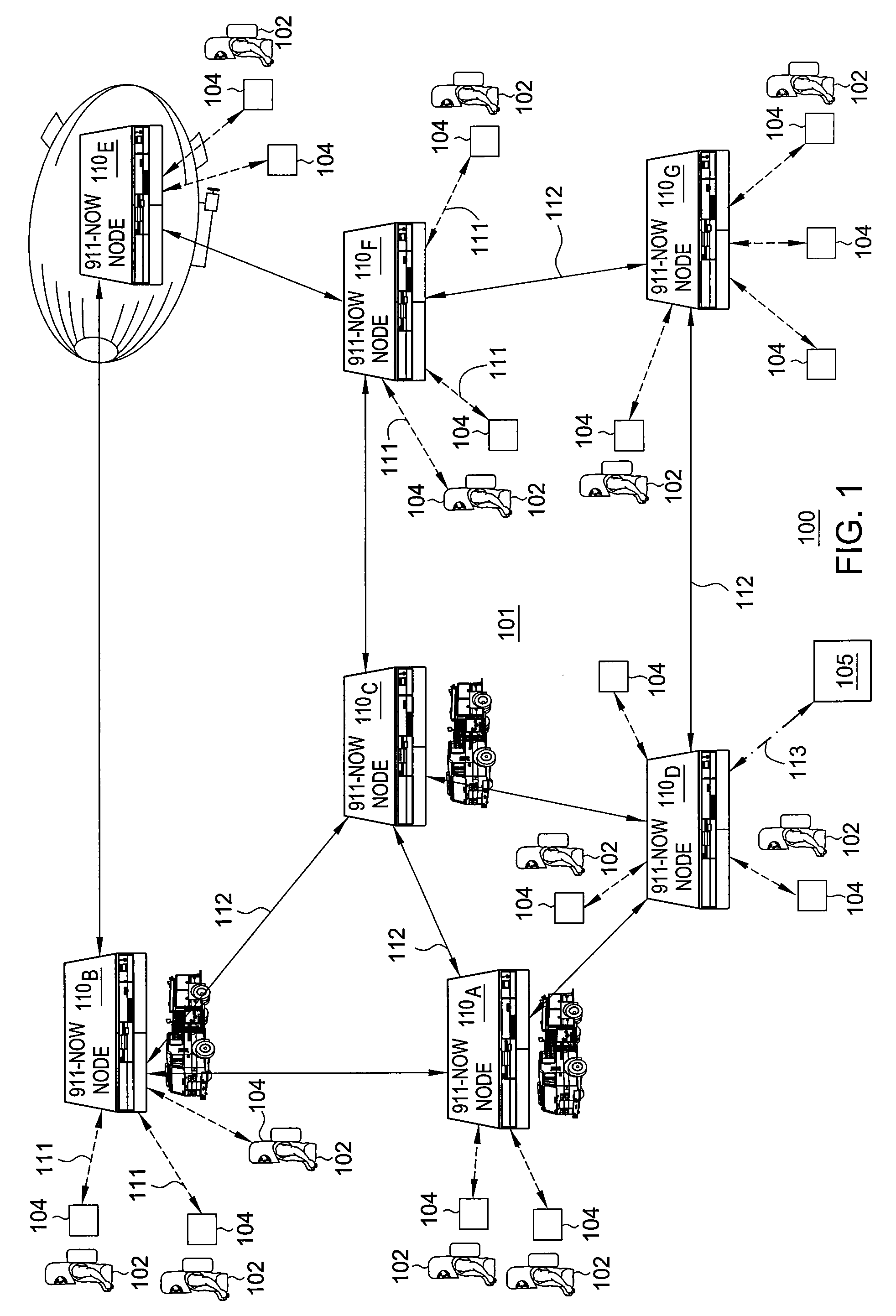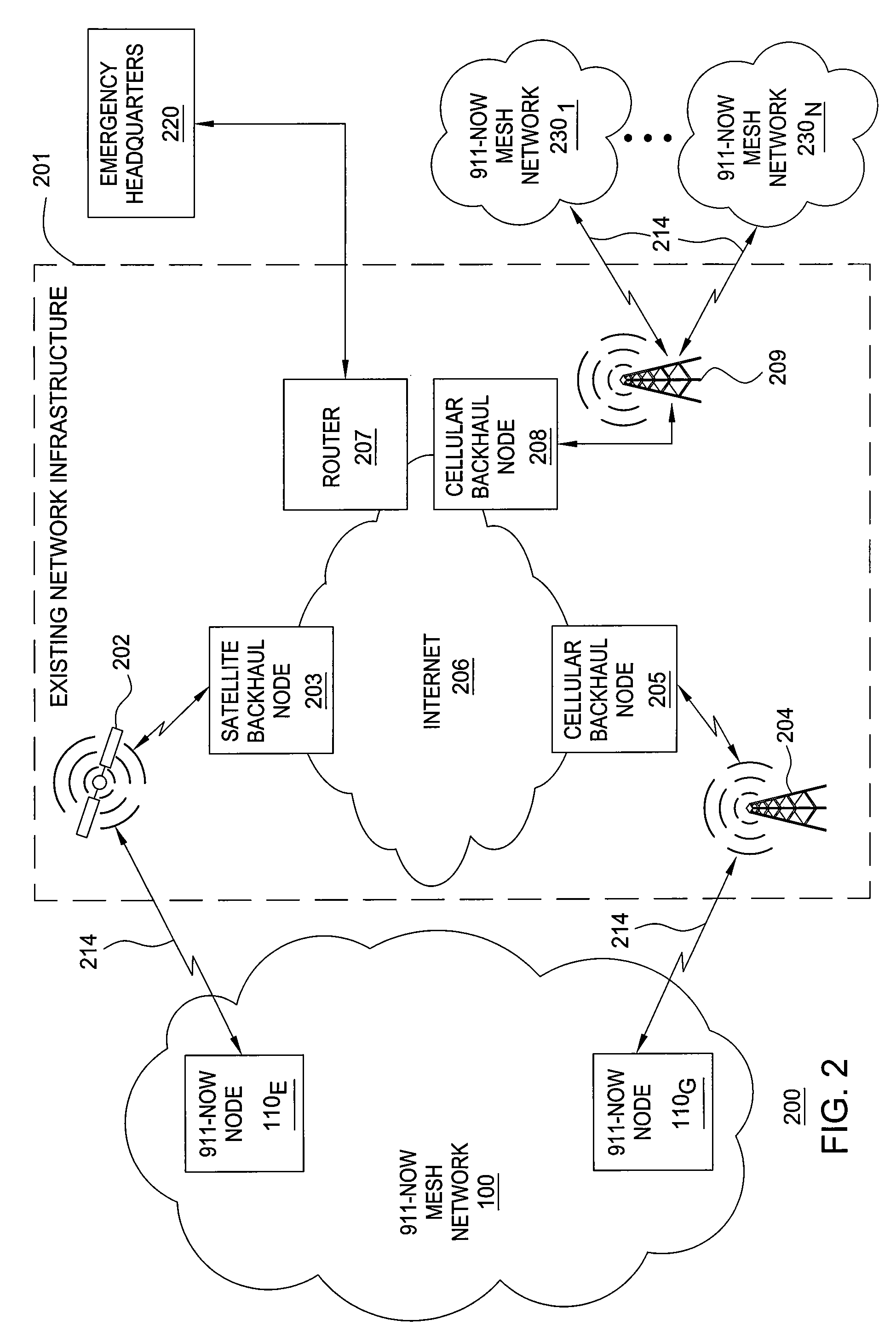Method and Apparatus for Authenticating Nodes in a Wireless Network
- Summary
- Abstract
- Description
- Claims
- Application Information
AI Technical Summary
Benefits of technology
Problems solved by technology
Method used
Image
Examples
Embodiment Construction
[0019]The present invention is described within the context of a rapidly deployable wireless network (denoted herein as a 911 network on wheels, i.e., 911-NOW network); however, the present invention is applicable to various other networks. A 911-NOW network is formed by placing a 911-NOW node(s) on a mobile platform(s) such that when the mobile platform(s) is dispatched to a network site, the 911-NOW node(s) provides a wireless communication network. As described herein, one or more 911-NOW nodes may be deployed to form a wireless network. The 911-NOW network may be a standalone wireless network that is independent of existing network infrastructure or an integrated wireless network that utilizes existing network infrastructure.
[0020]FIG. 1 depicts a standalone 911-NOW communication network architecture that is independent of any existing network infrastructure. Specifically, standalone 911-NOW communication network architecture 100 includes a plurality of 911-NOW nodes 110A-110G (...
PUM
 Login to View More
Login to View More Abstract
Description
Claims
Application Information
 Login to View More
Login to View More - R&D
- Intellectual Property
- Life Sciences
- Materials
- Tech Scout
- Unparalleled Data Quality
- Higher Quality Content
- 60% Fewer Hallucinations
Browse by: Latest US Patents, China's latest patents, Technical Efficacy Thesaurus, Application Domain, Technology Topic, Popular Technical Reports.
© 2025 PatSnap. All rights reserved.Legal|Privacy policy|Modern Slavery Act Transparency Statement|Sitemap|About US| Contact US: help@patsnap.com



